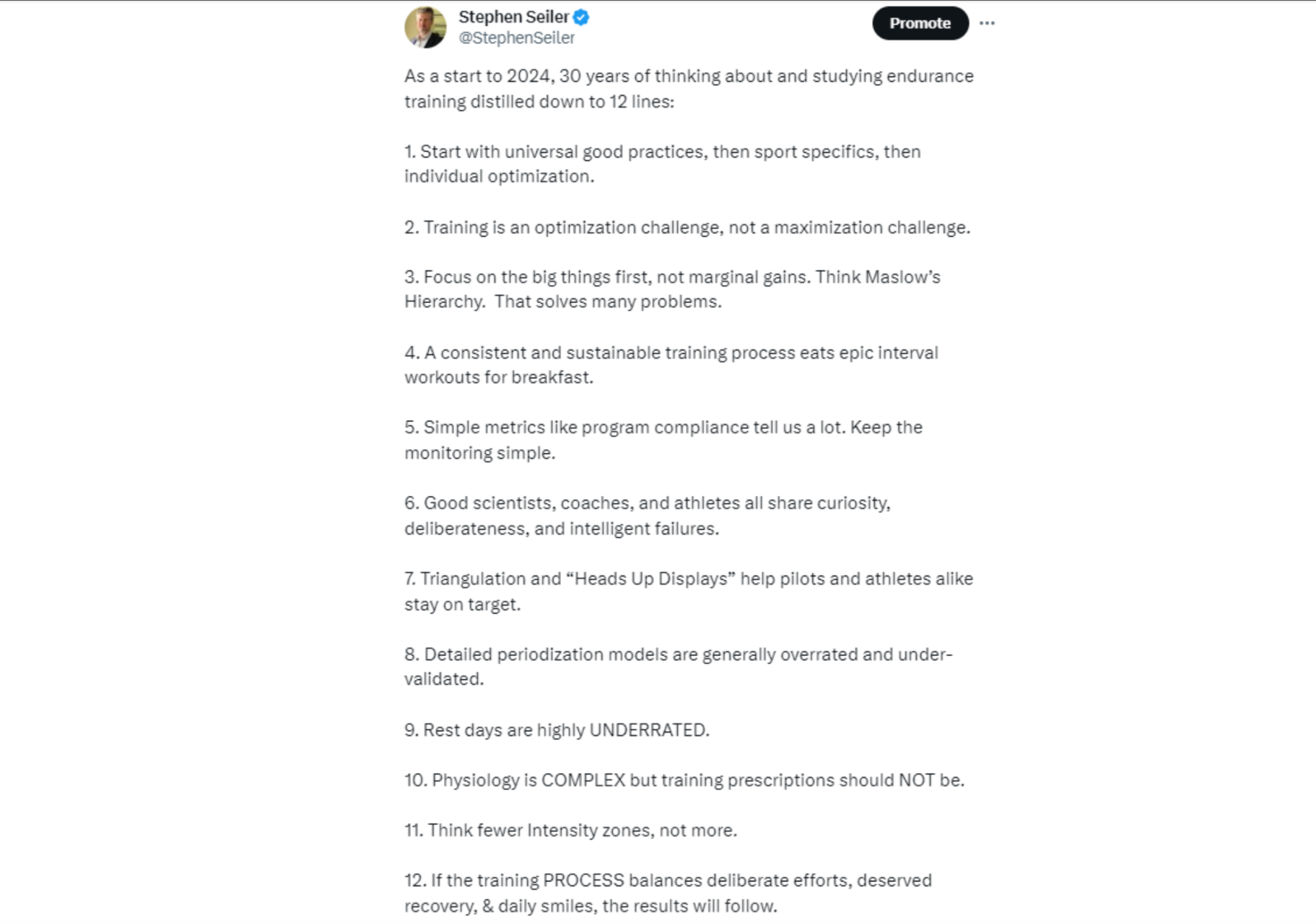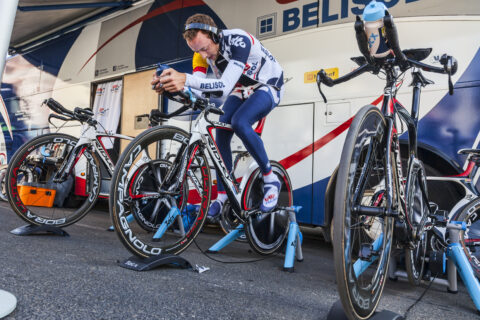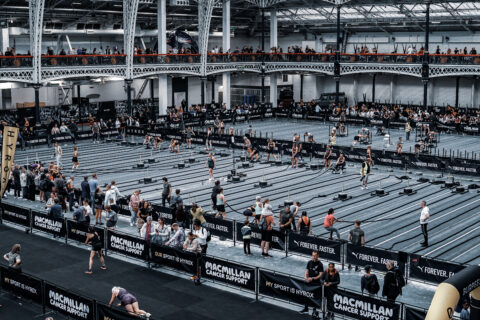After 30 years of studying exercise endurance training, Dr. Seiler distills it all into 12 fundamental practices.
After 30 years of studying exercise endurance training, Dr. Seiler distills it all into 12 fundamental practices.

After 30 years of studying exercise endurance training, Dr. Seiler distills it all into 12 fundamental practices.

After 30 years of studying exercise endurance training, Dr. Seiler distills it all into 12 fundamental practices.

We explore the best method for priming yourself for racing—busting myths and delving into the science of warm-up routines.

In this popular high-intensity fitness test, we explore the strength and endurance attributes that matter most, and how you can prepare for competition.

By stringing together several days of high-intensity training, then adequately recovering, overload blocks can produce big gains.

Adding days to your microcycles will help you improve recovery, which can improve HIT sessions. It’s a win-win.